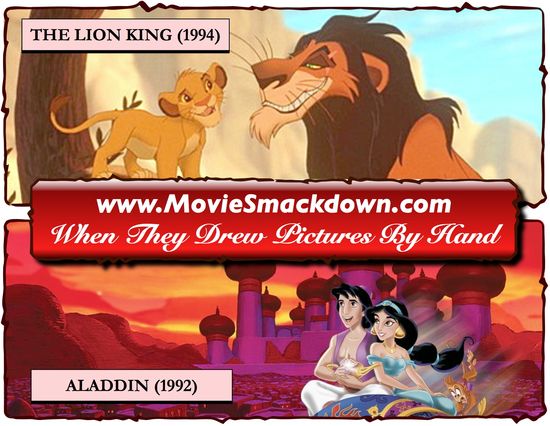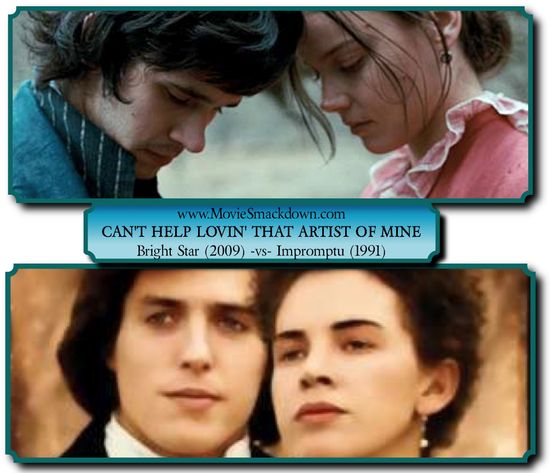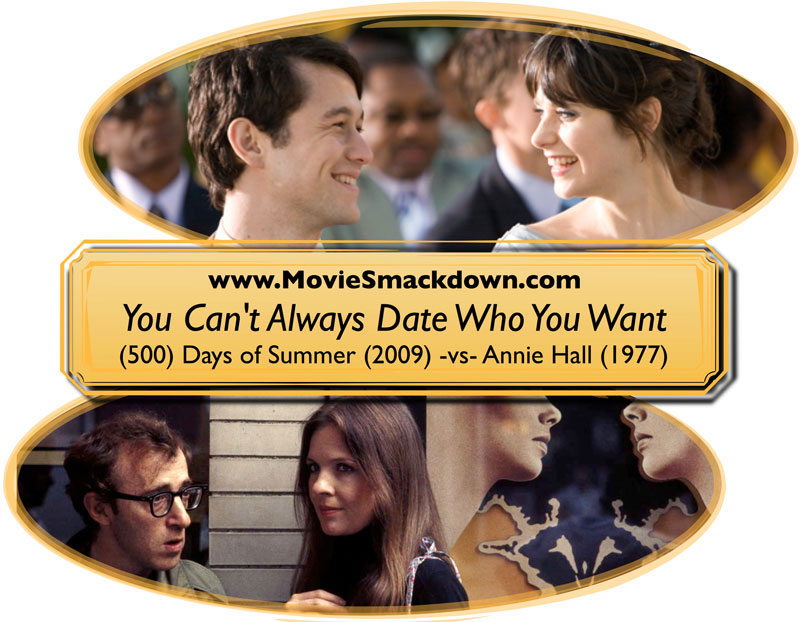 The Smackdown
The Smackdown
A year ago on this very site, a small, garbage-collecting robot named “Wall-E” dethroned the king of computer animation, Pixar’s beloved “Toy Story.” The film found gigantic success, being hailed by critics, winning the Academy Award for best animated feature and receiving a nomination for Best Screenplay. “Wall-E” transformed the genre and pushed the limits of innovation and creativity. Now, a year after its historical upset, “Wall-E” stands ready to defend its title against the newest of Pixar’s animated giants, the high-flying adventure story “Up.” Headlining opening night of the Cannes Film Festival, a feat never before accomplished by an animated feature (let alone an American one,) “Up” and its cast of elderly men, children and talking dogs (you heard me) have entered the world of cinema at full steam, their focus fixed solely on taking our favorite robot’s crown. Will “Wall-E” have enough strength to put down its first challenger, or will his reign prove a short one? Let’s find out!
[singlepic id=312 w=320 h=240 float=right]
The Challenger
“Up” tells the story of Carl Fredricksen, an elderly balloon vendor who once dreamt of adventure with his wife Ellie, but now resigns himself to sitting on his front porch while the world moves on around him. In order to keep a promise he had made to his Ellie a lifetime ago, Carl decides to leave the world behind and relocate their home to the mythical Paradise Falls in Venezuela, the last known origins of Carl and Ellie’s childhood hero, adventurer Charles Muntz. His plan – to lift their home out if its foundation by thousands of colorful balloons and sail through the heavens to his Paradise Falls. However, what Carl doesn’t plan for is to accidentally take Russell, an energetic young boy scout, with him on his adventure. Nor does he plan to be thrown into the middle of a battle for a mysterious giant bird known as “Kevin,” a conflict that has the potential to jeopardize his promise to Ellie.
[singlepic id=722 w=320 h=240 float=right]
The Defending Champion
By now, you all know the story. Earth is in ruin, covered by trash heaps that pile up like mountains. Humanity has given up on the planet, leaving the world behind to spend 700 years living in a mass conglomerate space station floating through space while robots stay behind to clean up. The film opens on Wall-E, the last of those robots robots, working away tirelessly, spending the remainder of his days sorting through the trash for interesting treasures, unaware of his own loneliness. Â However, Wall-E’s monotony is soon shaken up as a mysterious spaceship descends from the heaven and a sleek, new Robot named EVE appears on a mysterious, classified mission. Instantly, Wall-E finds himself smitten with EVE and sets out to win her heart whatever way he can.
What transpires next is one of the most beautiful love stories in cinema history. Set amidto an epic and exciting space opera, “Wall-E” has quickly become one of the most popular films of all time, finding huge success from worldwide audiences and critics alike. It is a monumental technical achievement that is full of heart and it rightfully wears the title of “Best Computer Animated Feature.”
Let’s just see if that title is a permanent one.
The Scorecard
If you’ve read my previous review of “Wall-E,” you know that I’m a big fan. Technically, the film is without competition in the computer animated genre and it can go toe-to-toe with any live action epic out there. With camerawork that feels like an actual operator is at the helm and lighting that was contributed to by such masters as Roger Deakins, it is a vision to behold, blending the line between computer animation and live action (the animation is at times nearly photo-realistic.) I personally think that the scenes on Earth are by far the most awe-inspiring and the first 25 minutes of the film are a lesson in execution for any filmmaker, one that should be studied. And the sound design…I do not recall having ever been struck by sound design before Wall-E. Ben Burtt’s work is jaw-dropping, it’s what breathes life and personality into the robots and is just as important as the iconic camerawork.
With regard to screenplay and story “Wall-E” is a beautifully told love story about two robots who barely speak. The challenge in making that idea work should seem obvious. Yet the writers were not only able to make audiences care about these buzzing and beeping pieces of metal, but found a way to make the love found between them almost a physical presence. The film exemplifies the power of visual storytelling, maintaining all the action and thrills required of a space-faring adventure story while remaining mostly dialogue free. It is a small, intimate love story told on a galactic stage and yet never seems to lose itself or feel out of scope, working hard to keep what it considers most important front and center – the love between Wall-E and Eve.
Unfortunately (and only after repeat viewings,) I have to admit that the film trips up a bit when it does move away from Wall-E and Eve to focus on the plight of the obese, lazy and utterly dependent human population. While I am an avid supporter of the green movement and appreciate the message of the film’s backdrop, there are only so many lazy, fat human jokes I can endure before growing somewhat tired. Fortunately, the film doesn’t linger too long on these secondary caricatures and keeps an eye on itself so as to avoid becoming overtly preachy. But one fault I do shake my head at is the inclusion of a live-action Fred Willard. I understand that there is an urge to make a connection between the humanity we know and the one we might become if we’re not careful, but after much thought, I realized that a computer animated skinny person would have done the job for me just as well. Since so much of the film appears photo-realistic and while it is exciting to see how well live action can mix with the computer animation, the inclusion of the famous comedian only calls attention to the exaggerated nature of the humanoids that comprise the rest of the film, making them that much more cartoony. And that in turn makes me care less.
“Up” in comparison is an extremely beautiful and yet very different film. It takes command of its color palette and, like Wall-E, masterfully uses it to complement the tone and thematics of its story by creating a style all its own. Where “UP”‘s aesthetics really reach the gosh-wow level though are in its wides – iconic, grandiose moments of pure cinema depicting the house and its thousands of vibrant, shifting balloons floating through vast, open sky. It is in these moments when the film is truly breathtaking, drawing easy allusion to such animated masterworks as Hayao Miyazaki’s “Laputa: Castle in the Sky.”
In terms of innovation and technical achievement, “Up” falls a bit short in comparison to Wall-E. However, it is not without its merit. A near 30,000 balloons that appear in the film, each an individual object with its own set of physics that reacts independently to every push and sway of the others, should give you a sense that the simplicity and subtlety of “Up”s imagery masks a mind-boggling challenge in computer animation filmmaking. It is a masterful technical achievement, though those successes do get outshined by its robotic cousin Wall-E
In terms of story, I at first envisioned the premise and structure of “UP” to be problematic. The idea is instantly magical – floating through the heavens in your old house, lifted by thousands of candy-colored balloons. That’s an instant hook. But approaching the film, I worried that if the filmmakers allowed the characters to eventually leave the floating house, how might they then get them to return to it? And would they? And worse, if they did find ways to get back on, would those reasons come off as gimmick? Fortunately, the film handles this masterfully. Much of the film tak
es place on the ground, but the house (and what it represents) never disappears. The magic is always present, the house’ influence always weighing on Carl’s mind. I sincerely applaud the filmmaker’s ability to handle that so skillfully.
“Up”s story is in fact a bit more clear than Wall-E in terms of objective. Carl wants to bring his wife to Paradise Falls in Venezuela like he promised her years ago. Once there, he has to choose between keeping that promise and helping Russell save the bird and return her to her family. Using a clear, objective-driven story structure allows for the power of “UP” to come through in the character’s decisions – whether or not they choose to change their course of action. Â I won’t ruin for you what Carl decides to do, but it is the decisions that he makes that dictate the course of the story and his own development as a person.
However, a possible criticism of the film might be that the plot isn’t exactly surprising. In fact, its structure proves rather formulaic and anyone that needs to be genuinely surprised by this film might be let down.
“Up”s major strength comes with its choice of characters and subject matter. For the last decade, Pixar has been known for bringing to life the things of children’s imagination: toys, cars, animals (that talk,) and finally, robots. “UP” focuses on an old widower and a young boy in need of a father figure, nothing extremely out of the ordinary or that we haven’t seen before. But these characters are hardly a safe bet for Pixar, especially with Toy Story 3 just around the corner. I (like many, I’m sure) at first worried that “UP” might just be filler, something to pass the time between Wall-E and the next TS.
But after watching “Up” I soon realized that I had been thinking about the project in the wrong way. After nearly 15 years of establishing itself as the leader in computer animation, of showing the world that it had the ability to breathe life into whatever subjects it pleased, Pixar made an important choice. It decided to make a film that was truly human. While the previous Pixar creations have always been filled with well-rounded characters that were used to comment on humanity, “UP” didn’t try to mask who it was really focused on. It is a beautiful observation of character that isn’t afraid to go to the dark parts of human experience: unfulfilled dreams, abandonment, loneliness, even death. “Wall-E” is a story about love. “UP” is a reflection on life.
The Decision
Over the last decade-and-a-half we have witnessed the evolution of Pixar Animation Studios, not only in its place among cinema giants, but in terms of its characters and the stories it wants to tell. With each new project, every challenge proved bigger, ever limit was pushed. With Wall-E, it blurred the lines of reality and imagination, forging a technical marvel that is second to none while choosing to use that innovation to tell a small, personal love story that people can relate to. Wall-E is a masterpiece, plain and simple.
And so, having perfected their technique, having pushed their technical mastery to its limit, what does Pixar do? Where do they look to build upon what they’ve accomplished?
They make a choice. They look at us.
They look “Up.”




ot only it’s Pixar’s best film of all-time but it’s the best movie of this year and one of the greatest imaginative, visually, moving & excellent animated films in years and surprisingly, one of the best sci-fi movies since E.T.!! Coming with high expectations, it definitely succeeded mines. It’s so beautiful, moving, hilarious & sad at the same time. And for those who has been anticipating Thomas Newman’s score for WALL-E, it’s certainly one of his best right behind Finding Nemo in which I thought was his best score to date! Like I said it’s Pixar best film so far, WALL-E knocked off Ratatouille of the top spot in which I thought it was their best film to date and officially, WALL-E is the best Pixar film i’ve ever seen with Ratatouille right behind and Finding Nemo, third. Pixar fan or non-Pixar fan, you’ll definitely enjoy this one. WALL-E will forever be remembered as one of the most lovable characters ever created on film!!!
I’m sobbing while watching UP
Really well written article. Every Pixar movie has an iconic moment – the first 20 minutes of Wall-E are testament to their mastery of cinema, not just animation. And UP, well again the first 20 minutes is some of the most moving cinema I’ve seen in years – I cried in the cinema – a first for me.
That Pixar make such stunning animation is almost secondary to the fact they make great movies, period. I couldn’t split these two titles – well done at having managed to do so!
Just thinking, despite how much I loved Inglorious and The Hurt Locker, I would be just as happy to see “UP!” take Best Picture this year.
UP hasn’t been released in Australia yet, but after this, I am looking forward to it more than ever. I loved WALL-E, and this review has only made me more amped for UP!!!
ANYTHING with Fred Willard (unless it’s directed by Christopher Guest or co-stars Martin Mull) is automatically docked points.
It was a tough one.
Ultimately though, I had to ask myself what was most important. And for me, it was the subject matter “Up” was willing to focus on, the way it handled it, examining the human experience and the really difficult parts of it. I think this is the most important film Pixar has made.
I still am a huge wall-e fan though!
I was surprised by this decision! I mean, I know what extremely high regard you hold “Wall-E” so to see it lose the crown on this one blows me away. I haven’t seen “Up” yet (it was sold out on every showing last weekend) but it’s on tap in the next few days. Excellent review, too… really makes me appreciate both of these films in new ways. Bryce